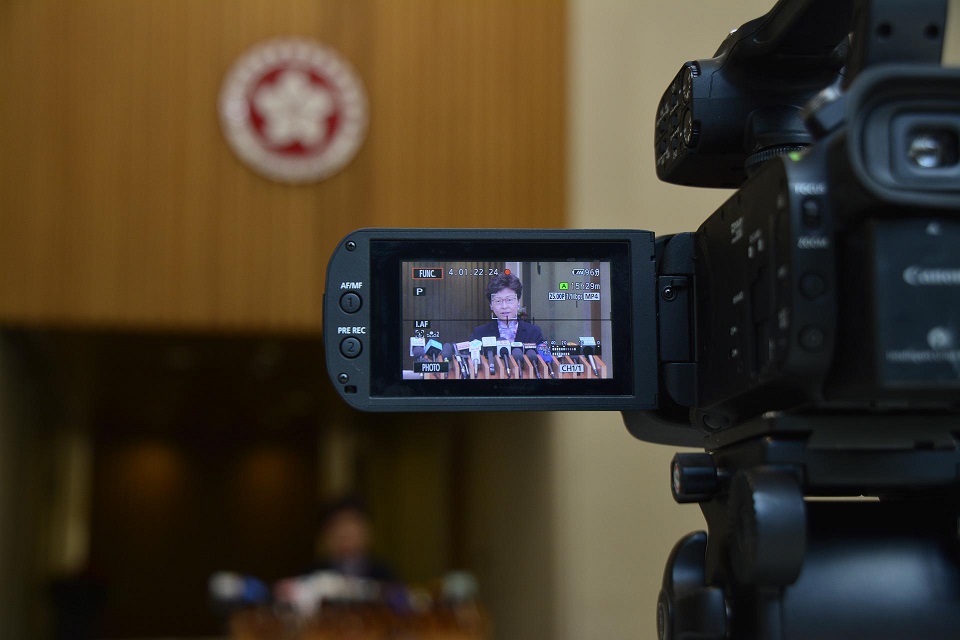For democracy in Latin America, 2022 was a particularly difficult year. The political landscape was consolidated or transformed, there was police repression, protests, elections and new Governments. And in the middle of it all was the press. And it still is.
 Monica del Pilar Uribe Marin*
Monica del Pilar Uribe Marin*
For some journalists it was a good year, another year of distortion of the truth, of connivance with political and economic power.
But for many journalists, alternative and independent, it was a dismal year, because they were silenced in different ways. In fact, some 40 were murdered (34% of those worldwide!).
Mexico was the country with the second highest number of journalist assassinations in the world, 17. It followed Haiti. And within the region it was followed by Colombia, Honduras, Brazil, Ecuador, Chile, Guatemala and Paraguay. (Sadly, 86% of these murders remain in impunity).
According to Reporters Without Borders, few countries respect press freedom in Latin America: Costa Rica, Jamaica and Argentina seem to do so. But the opposite happens in Cuba, Honduras, Nicaragua, Venezuela, Colombia, Bolivia, Mexico, Guatemala, El Salvador and Brazil.
In these countries, journalists have fled because of threats and persecution from those in power. For example, over 70 have left El Salvador in four years. Nayib Bukele, like other Latin American leaders, is a clear enemy of the media that oppose him.
Hundreds of others have been threatened, detained or jailed, even kidnapped or disappeared. Still others were victims of digital or judicial warfare. They also faced illegal surveillance – by state security forces – of their private communications and the information stored on their personal and work devices, putting journalistic sources at risk.
 All this persecution persists today.
All this persecution persists today.
Added to this is the use of social media by business people, politicians and governments seeking to smear journalists and independent media outlets, which are a counter-power, as is the case in Venezuela.
Another strategy, which is practically new, are legal actions and regulations that restrict the exercise of journalism. The aim is to prevent the truth from being investigated and reported.
With some variations, the spectrum in the region is the same: permanent violation of press freedom, and a right-left ideological confrontation and social conflicts that impact journalistic practice and polarise societies.
People distrust the mainstream media, which is why alternative media are another option for information and have become necessary in countries where dictatorships, authoritarianism or ‘fake democracy’ have repressed them to the point of closing them down. In Nicaragua, for example, 54 media outlets have been shut down.
Colombia
According to Reporters Without Borders, in the world list of 150 countries, Colombia ranks as the 35th most dangerous country for journalists, especially for those working in towns and villages and working in alternative and independent media.
Covering stories about the environment, internal conflict, corruption or complicity between politicians and illegal armed groups is a risk.
 It systematically exposes them to harassment, intimidation and violence. The truth is forbidden.
It systematically exposes them to harassment, intimidation and violence. The truth is forbidden.
According to Foundation for Press Freedom (FLIP) in Colombia, between 2006 and 2022, 5912 journalists were victims of press freedom violations. During these periods, presidents of the far-right governed Colombia. In the last one, the government of Ivan Duque, more than 2700 journalists were victims in four years.
Most of them do not belong to the mainstream media. By the way, there are four mainstream media in Colombia: El Tiempo, Semana magazine, El Colombiano and RCN. All four are owned by very rich and powerful individuals.
These media have the support of the powers that be (which are on the right and far right), they have generous advertising and exclusive access to certain information. They do not denounce or expose people, firms or civil servants with similar political affiliations who contravene the law.
Independence and truth do not exist for them.
As a counterbalance, and for a little over a decade now, dozens of alternative media, some of them independent, have emerged. They have emerged in areas where violence and corruption for them cannot be hidden, even costing them their lives.
They emerged because they were fed up with the failure of the traditional media to denounce the horrors of paramilitarism, guerrilla warfare and state crimes.
They arose because people stopped believing in the traditional media.
 There are independent, ethical and truth-seeking media such as La Nueva Prensa, La Oreja Rota, Cuestión Pública, Verdad Abierta, La Raya and Rutas del Conflicto, among others. They subsist on donations, voluntary work or the support of a foreign organisation. There is the case of Noticias Uno, a TV news programme that was critical of previous governments, then lost its space but was saved by a crowdfunding campaign that raised enough money for it to sustain itself. Today it is one of the most respected and trusted news programmes in Colombia. These media seek to provide the information that the mainstream media hide or distort and are therefore often victims of the circles of power.
There are independent, ethical and truth-seeking media such as La Nueva Prensa, La Oreja Rota, Cuestión Pública, Verdad Abierta, La Raya and Rutas del Conflicto, among others. They subsist on donations, voluntary work or the support of a foreign organisation. There is the case of Noticias Uno, a TV news programme that was critical of previous governments, then lost its space but was saved by a crowdfunding campaign that raised enough money for it to sustain itself. Today it is one of the most respected and trusted news programmes in Colombia. These media seek to provide the information that the mainstream media hide or distort and are therefore often victims of the circles of power.
In recent years, two events have determined where independent journalism is in Colombia.
One was the so-called ‘social explosion’, the national strike, which took place between 2021 and 2022 and where there were all kinds of human rights violations by the security forces against the demonstrators (torture, murder, sexual assault, arbitrary detentions, and disappearances).
There was a great silence on the part of the government and its controlling bodies. And the mainstream media not only hid the truth but also stigmatised the demonstrators, justified the violence, and allowed impunity to run its course (today, in the face of the ongoing investigations, they continue to act in the same way).
The truth was exposed by the alternative and independent media.
 They reported from the scene and interviewed the victims. Thanks to them and the social media, the horror of the ‘social explosion’ could not be buried,
They reported from the scene and interviewed the victims. Thanks to them and the social media, the horror of the ‘social explosion’ could not be buried,
The other event was the presidential elections which, for the first time in the history of Colombia, were won by a left-wing candidate, the current president Gustavo Petro.
Before, during and after the elections, the mainstream media handled information that was biased, manipulative, in many cases false and defamatory. Their reporting today is more ‘activism’ than ‘journalism’: they join forces to promote lies or provoke an adverse reaction to the opposition in public opinion.
And although there are some journalists’ organisations, none have spoken out or criticised the journalistic practice of these media. There is no independent press regulator in Colombia to monitor their practices and ethics.
Meanwhile, the independent media (many of which were victims of stigmatisation, persecution and judicial harassment under previous governments) are fighting a tough battle, denouncing or investigating questionable activities of the military, former presidents or public officials that are not undertaken by the mainstream media. Despite the fact that there is a different government, they still face violations of press freedom, as power continues to be in the hands of the country’s right and ultra-right, the economic groups and their friends who lead the controlling authorities.
For example, the Attorney General’s Office sent a letter to Noticias Uno “to inspect their facilities and certain information”, but its real purpose was to look at the information they had and to discover their sources.
 Other journalists have been victims of lawfare, such as some members of the daily La Nueva Prensa: they have been subjected to years of judicial persecution and are being sought to be imprisoned or to leave the country.
Other journalists have been victims of lawfare, such as some members of the daily La Nueva Prensa: they have been subjected to years of judicial persecution and are being sought to be imprisoned or to leave the country.
Another example occurred on 29 June last year when the Attorney General’s Office ordered an inspection of the magazine Cambio (another independent media), jeopardising the confidentiality of the source. The magazine was investigating a former general accused of links to drug trafficking.
There is also the case of a magazine whose editor and some of its reporters were victims of interceptions of phone calls and emails after they published articles on crimes committed by members of the armed forces.
According to FLIP, 595 violations against journalists were committed in 2022. There were 668 victims. The worst are the threats (246 journalists were threatened) and judicial persecution (57 journalists were affected), an effective weapon when it comes to silencing independent journalists.
Unfortunately, there is no body that really defends independent journalists, as they are only beginning to organise themselves and to try to professionalise their work. Without them, Colombia is condemned to a distorted truth that polarises the country even more.
It is up to the independent media to ensure that power is no longer confused with the truth.
(Photos: Pixabay)
* Monica del Pilar Uribe Marin: Intervention at the seminar “Mainstream Media Misrepresentation & the Independent Media Fightback”, held at the Latin American Conference 2023.












.jpg)












